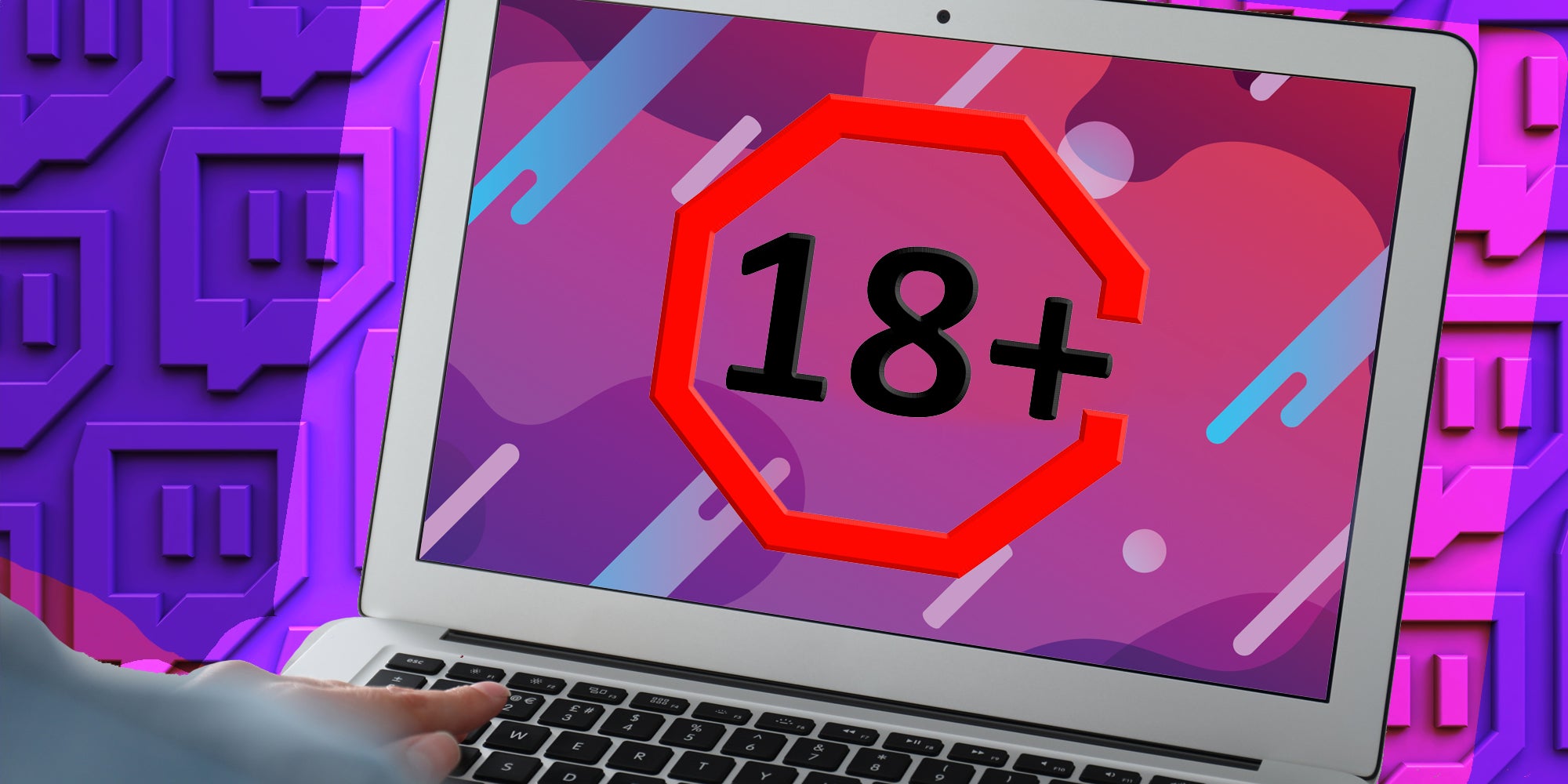
Once a child gains the ability to wander virtually, there’s a lot out there they shouldn’t be engaging with. Though every social media platform like Facebook, Instagram, and TikTok struggles with minor moderation, another keeps ending up smack dab in the middle of that loud conversation: Twitch. Every time a viral story surrounding lewd content comes up about the platform, like 2021’s hot tub controversy, there’s always someone in the comments wondering about the children.
Last week, Twitch shared a blog post that gave streamers the go-ahead to stream themselves “deliberately highlighting breasts, buttocks or pelvic region,” “body writing,” and “body painting on “female-presenting breasts and/or buttocks regardless of gender” as long as they label the stream as “mature.” Streamers can also perform “erotic dances” that “involve disrobing or disrobing gestures, such as strip teases.” The move was in response to a new genre of streaming, where some streamers positioned their cameras to look like they were topless.
But the new policy wasn’t universally liked, with some artists using the new “artistic nudity” clause to push the boundaries on what was acceptable on the site. And by the end of the week, Twitch backtracked. They announced that the updated “artistic nudity” policy has been removed (though the other rules remain in effect for erotic dances).
Anyone 13 or over can make a Twitch account to view or stream and “may only use Twitch under the supervision of a parent or legal guardian,” according to the site’s “Guide for Parents and Educators.” To help protect minor viewers, Twitch claims in that same post that it has “a team dedicated to the proactive detection and removal of inappropriate material” and that it uses “machine learning to prevent harm before it happens on Twitch.”
Parents can set up chat filters that block certain words, but that’s pretty much it when it comes to actual moderation tools. If a younger viewer wants to view a mature-rated stream, all they have to do is click a prompt saying they understand it’s mature, and it will let them right in.
Some streamers firmly believe that Twitch is a platform that needs to be safe for children, since they’re going to get online whether we want them to or not. Maggie (@draskia), a 12,000-follower streamer and mother of three teens, told Passionfruit that she worries that if viewers who find her more “wholesome” content on Instagram go to watch her stream, they “would find the explicit content” on the platform and she’d “feel responsible.”
“As long as there are no restrictions for kids to access the 18+ content, there is a danger they can stumble on it,” Maggie told Passionfruit. “But showing genitalia openly with no blur or restriction for a 13+ site is not something I can support.”
However, some creators feel that Twitch is not a children’s platform, like streamer Aeriel (@xoAeriel). With over 360,000 followers, she’s created a mature space environment where she’s free to dress in any outfit that still follows Twitch’s Terms of Service.
“They don’t provide content for kids. Most streamers swear and show things that would be inappropriate for a young, impressionable audience,” Aeriel said. “So it’s up to the parents to moderate their kids, not me. They can just as easily visit adult platforms as they do Twitch if their parents aren’t watching.”
Beyond “saving the children,” some Twitch streamers just don’t want Twitch to be a platform that showcases graphic content at all.
“The average viewer does not want to see graphic or sensitive material as they are browsing for a stream to watch,” 100,000-follower Twitch streamer Lowco (@LowcoTV) told Passionfruit. “Twitch needs to provide better protections for viewers.”
Though they disagreed on Twitch’s function, all the streamers I spoke to felt that Twitch’s current moderation standards for kids were less than satisfactory. Having partially age-gated areas and 13+ rules is nice, but they are incredibly easy to circumvent with just the mildest understanding of the internet.
Twitch could implement more protections: blurring mature streams before they are clicked, allowing viewers to filter out certain streams so they won’t appear in their searches, or creating hubs for parents that prevent underage viewers from looking at mature content.
Streamer Madison (@Xigglypuff) wrote on Twitter that she doesn’t “understand why there aren’t automatic restrictions implemented when a user inputs their birthday and they are under 18.
“It seems like it should be a requirement on every social media site,” Madison said. “I really think we should try to advance this conversation forward in a productive manner.”




